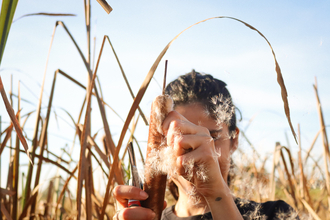Back in July 2023 we announced exciting new plans for a field scale wetter farming trial of typha, commonly known as bulrushes, on an area of drained agricultural peatland in Greater Manchester. The trial would re-wet the land to help reduce the damaging greenhouse gas emissions being released from the drained and oxidised peat, and then grow a commercial crop of bulrushes, a plant which thrives in these wetter conditions. The fluffy seed heads of the bulrushes would then be used to create BioPuff® – a revolutionary eco-textile that could replace goose down or polyester in puffer jackets.
Read: Are bulrushes the answer to sustainable clothing and farming?
We are pleased to announce that the first stage of the work, to re-wet the peat, is now complete. The drainage ditches that ran around the perimeter of the field have been blocked and a series of bunds (waterproof barriers of compressed peat) have been installed to stop water from draining off the field and allow the peat to return to its naturally boggy state.
Bunds have also been used to divide the field into a series of compartments where the bulrushes will be grown, and this also helps to control the water levels across the field keeping them at, or just below ground level throughout the year, which is just right for the bulrush crop.


